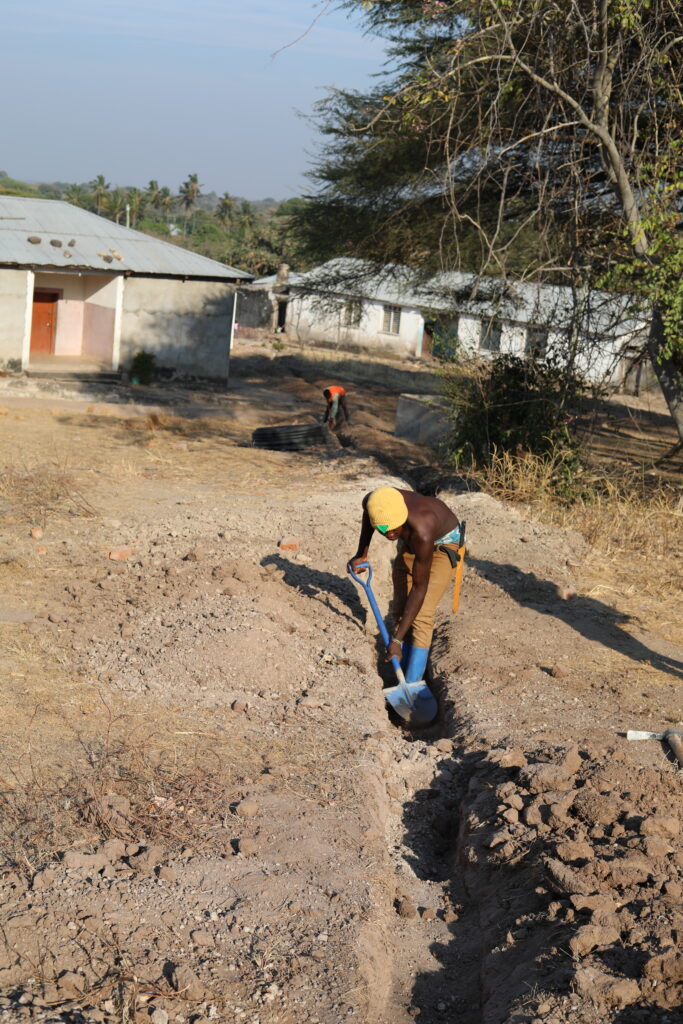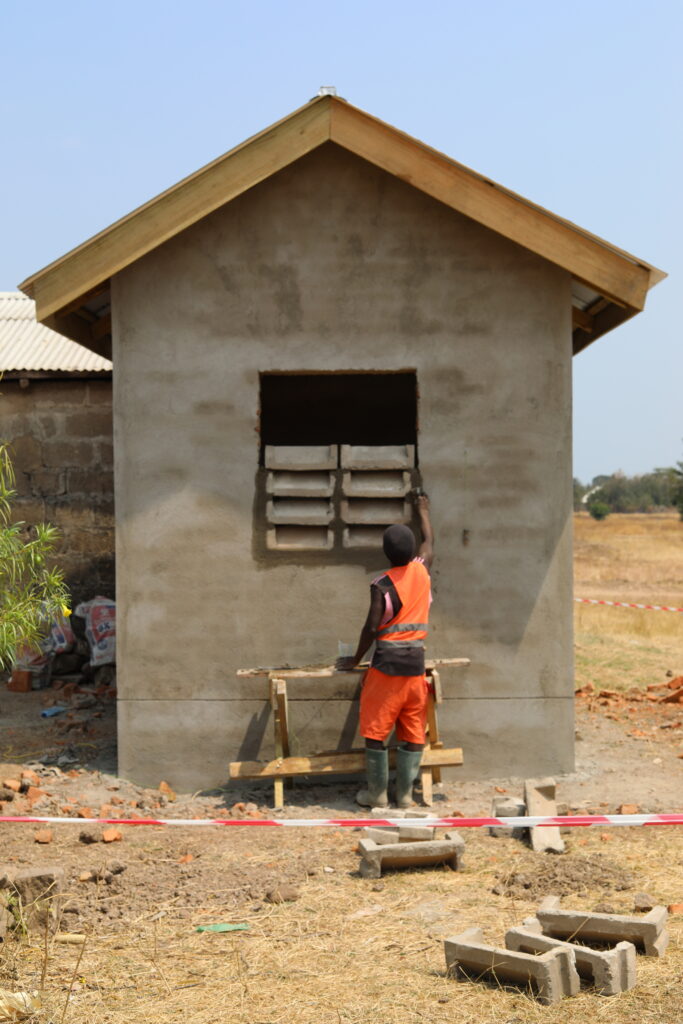In July 2025, WEFTA and our partner Sanitation and Water Action (SAWA) launched a project to improve WASH and water infrastructure at Lituhi Parish Centre. Lituhi is located in the Nyasa District of Tanzania’s Ruvuma Region. The project serves the Lituhi Hospital, also known as St. Elizabeth Hospital, the Sisters’ convent, and the priests’ residence with improvements that include new and rehabilitated toilet blocks, a reliable water supply, and a strengthened sanitation system.
During the first month, the team convened parish and hospital leaders to confirm project goals, completed a WASH baseline assessment, mobilized materials from local suppliers, and began major construction activities. Progress includes roofing of new toilet blocks, excavation of septic tanks and soakaway pits, installation of plumbing at the convent, and construction of a small shed to house the power generator.
Reaching Key Milestones
A key milestone was the completion of well drilling for the new water supply. The borehole was successfully drilled with excellent yield and water quality, ensuring a dependable source of clean water for the parish. Construction of the borehole chamber is complete, and excavation of the pipeline trench has begun, with 150 meters of the planned 685 meters already laid. This system will connect directly to the hospital and parish facilities, replacing aging and corroded steel pipes with durable IPS piping for long-term reliability.
Critical for Ensuring Sustainability
Community involvement has been central, with local artisans and laborers providing skilled work and parish leaders ensuring strong oversight. While excavation through hard rock and replacement of severely deteriorated internal water systems have added challenges and costs, these upgrades are critical to ensure the parish has a safe, sustainable supply of clean water and sanitation.
The improvements are already sparking excitement and hope in Lituhi, where access to clean water and dignified sanitation will directly impact health outcomes and quality of life for hospital staff, patients, and the wider community – positively impacting over 40,000 lives.
Read the previous progress update.




